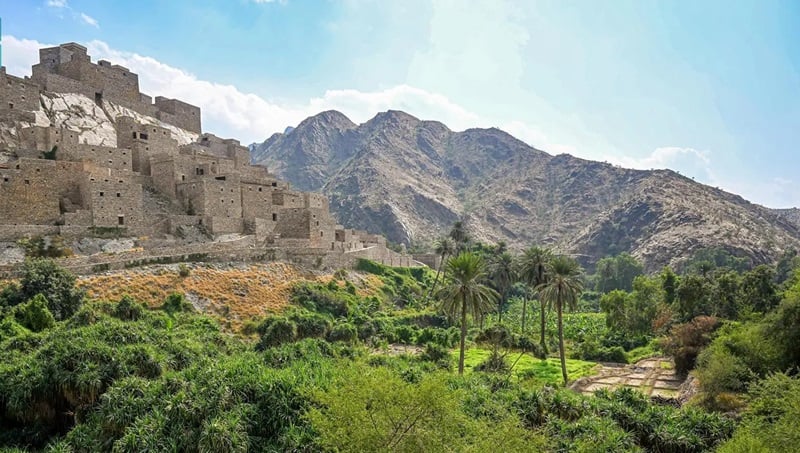Nestled amidst the picturesque landscapes of Saudi Arabia, Al-Baha stands as testament to the enduring legacy of ancient architectural artistry.
Scattered across its vast expanse, villages showcase a harmonious blend of residential structures, fortresses, and citadels, each meticulously crafted to blend seamlessly with the surrounding environment.
Mohammed Al-Ghamdi, a 73-year-old stonemason with decades of experience, described the intricate process of building a traditional Al-Baha home.
The foundation of this craft lies in harmony with nature.
The designs are adapted to the region’s unique topography and climate.
Stones play a pivotal role in shaping the region’s structures. Al-Ghamdi said he selects and arranges each stone, ensuring structural integrity and aesthetic appeal. The rhythmic placement of stones not only provides strength but also creates a captivating visual tapestry.
Once the walls are erected, the focus shifts to the roof. Carefully selected wooden beams are strategically arranged, forming a sturdy framework that shelters the interior from the elements. Over this skeletal structure, a layer of vegetation is meticulously laid, providing insulation and a natural barrier against moisture.
Clay is applied to the interior walls, imparting a warm, earthy hue that enhances the home’s cozy ambiance. It plays a crucial role in reinforcing the roof, ensuring its resilience against harsh weather conditions.
Juniper wood, renowned for its durability and versatility, is employed in crafting doors and windows, adding a touch of elegance to the home’s exterior. Al-Ghamdi highlighted the ease with which juniper can be recycled, demonstrating the region’s commitment to resourcefulness.

White marble adorns the doorways and window frames. The intricate carvings and patterns etched into the marble serve as testament to the artistry of Al-Baha’s craftsmen.
Towering pillars play a crucial role in supporting the weight of the roof.
Dr. Abdulaziz Hanash, an architecture professor at Al-Baha University, offered insightful perspectives on the significance of the region’s architectural heritage. “The architectural landscape of Al-Baha serves as a tangible chronicle of the region’s rich history and cultural evolution,” he said.
Hanash emphasized the region’s abundance of historical landmarks, both in the Sarat and Tihama regions, highlighting the government’s dedication to promoting tourism in Al-Baha.







